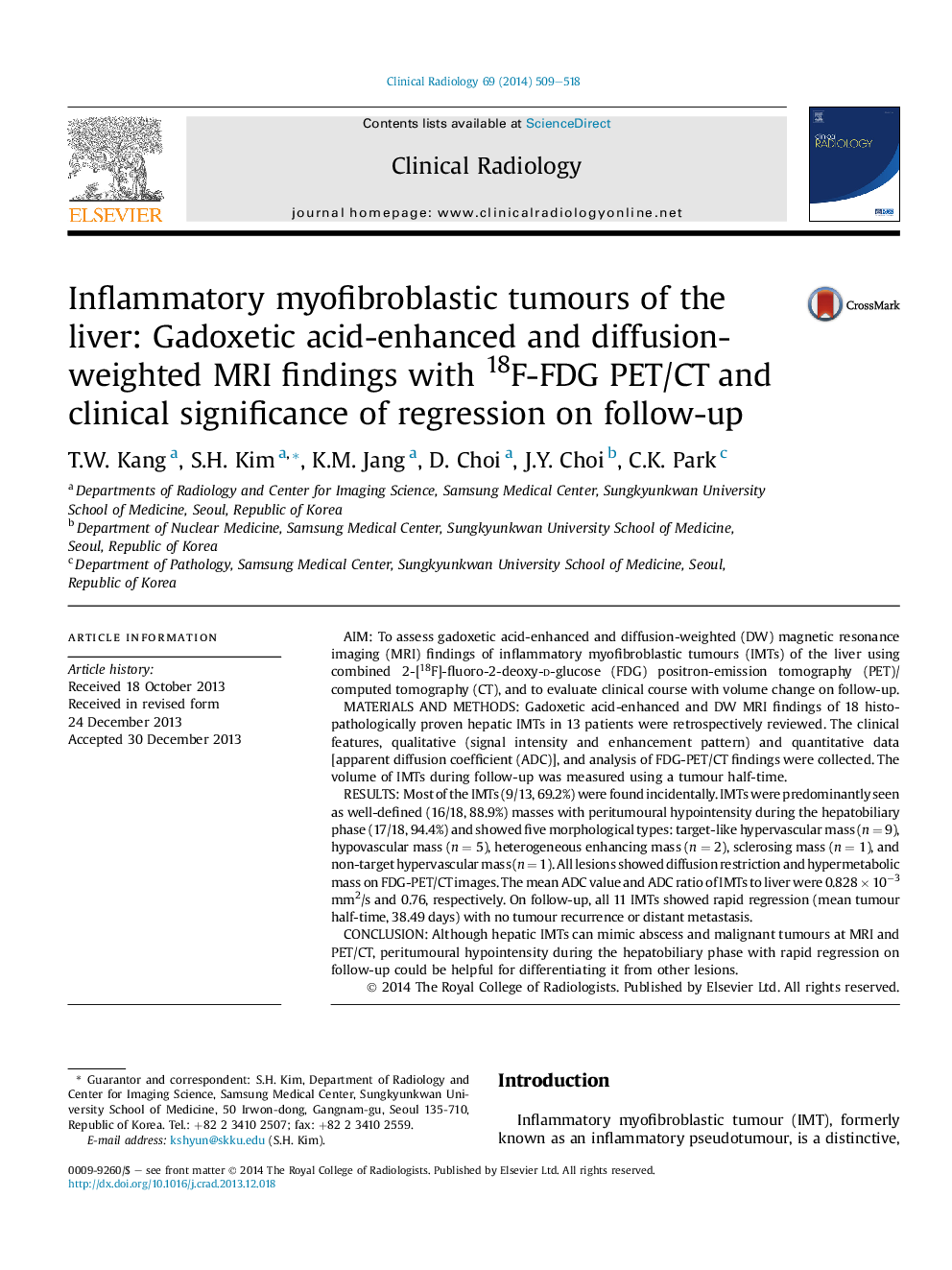| کد مقاله | کد نشریه | سال انتشار | مقاله انگلیسی | نسخه تمام متن |
|---|---|---|---|---|
| 3982344 | 1257723 | 2014 | 10 صفحه PDF | دانلود رایگان |

AimTo assess gadoxetic acid-enhanced and diffusion-weighted (DW) magnetic resonance imaging (MRI) findings of inflammatory myofibroblastic tumours (IMTs) of the liver using combined 2-[18F]-fluoro-2-deoxy-d-glucose (FDG) positron-emission tomography (PET)/computed tomography (CT), and to evaluate clinical course with volume change on follow-up.Materials and methodsGadoxetic acid-enhanced and DW MRI findings of 18 histopathologically proven hepatic IMTs in 13 patients were retrospectively reviewed. The clinical features, qualitative (signal intensity and enhancement pattern) and quantitative data [apparent diffusion coefficient (ADC)], and analysis of FDG-PET/CT findings were collected. The volume of IMTs during follow-up was measured using a tumour half-time.ResultsMost of the IMTs (9/13, 69.2%) were found incidentally. IMTs were predominantly seen as well-defined (16/18, 88.9%) masses with peritumoural hypointensity during the hepatobiliary phase (17/18, 94.4%) and showed five morphological types: target-like hypervascular mass (n = 9), hypovascular mass (n = 5), heterogeneous enhancing mass (n = 2), sclerosing mass (n = 1), and non-target hypervascular mass (n = 1). All lesions showed diffusion restriction and hypermetabolic mass on FDG-PET/CT images. The mean ADC value and ADC ratio of IMTs to liver were 0.828 × 10−3 mm2/s and 0.76, respectively. On follow-up, all 11 IMTs showed rapid regression (mean tumour half-time, 38.49 days) with no tumour recurrence or distant metastasis.ConclusionAlthough hepatic IMTs can mimic abscess and malignant tumours at MRI and PET/CT, peritumoural hypointensity during the hepatobiliary phase with rapid regression on follow-up could be helpful for differentiating it from other lesions.
Journal: Clinical Radiology - Volume 69, Issue 5, May 2014, Pages 509–518